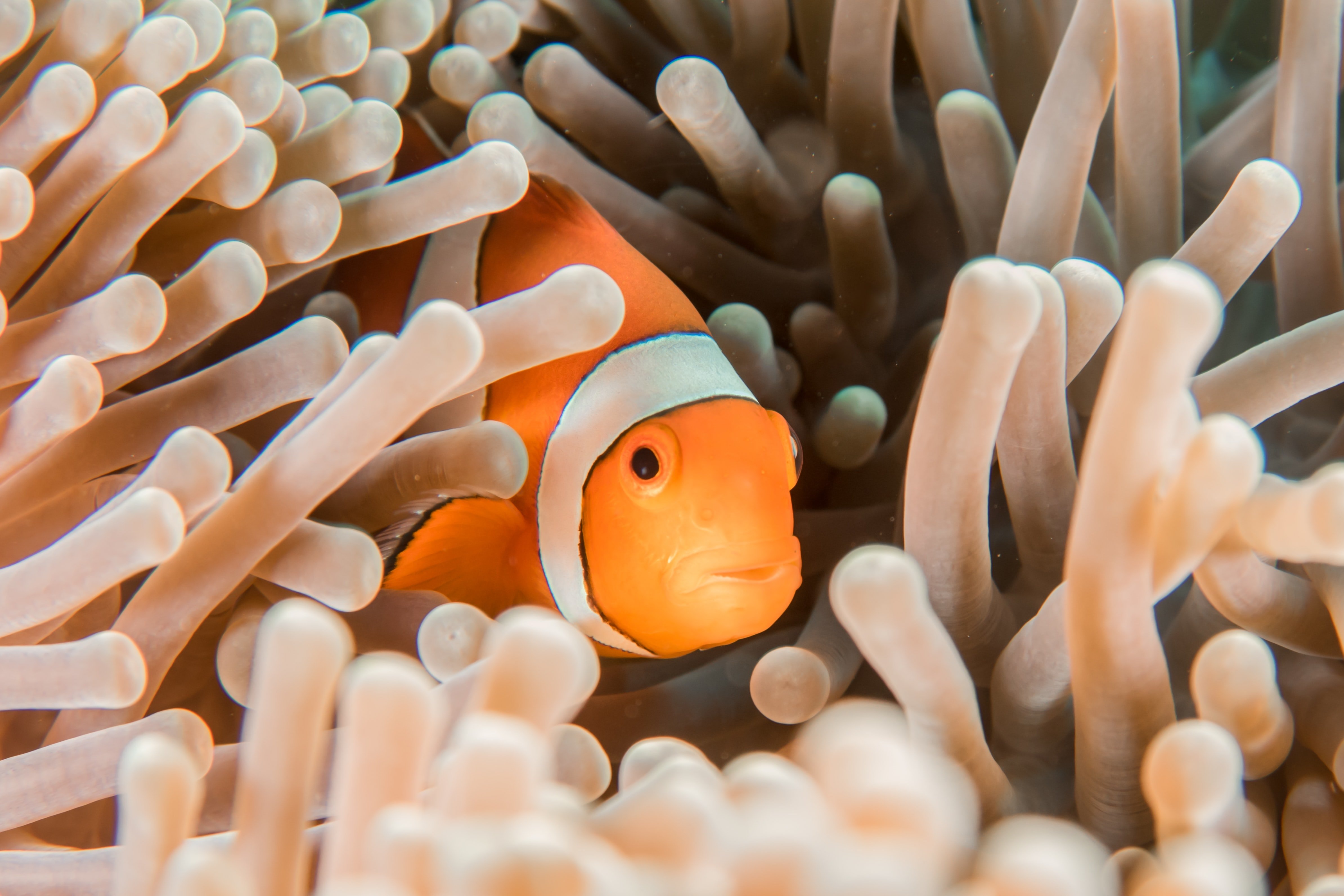How clownfish grow to match their environments
9 August 2022 | By: Newcastle University | 2 min read
A recent study has revealed that clownfish adjust their growth to their environments.
The partnership between clownfish and sea anemones is one of the most iconic in the natural world.
Clownfish and anemone’s share a mutualistic relationship, in that both species benefit from each other and help each other to survive. Clownfish seldom stray far from their anemone. During the day, they dart through the water overhead to catch morsels of food. At night, they bury themselves within the anemone’s stinging tentacles.
Different types of clownfish tend to prefer living with different types of anemones. The right anemone provides the clownfish with protection and shelter, while the clownfish provides the anemone with food in the form of waste, and protection from predator fish.
The study
In a series of lab experiments, scientists from Newcastle and Boston Universities paired clown anemonefish with anemones of various sizes to investigate how the sizes of both were affected.
They found that fish on larger anemones grow faster than fish on smaller anemones.
The results offer the first experimental evidence that vertebrate growth plasticity responds to a mutualistic interaction. It also explains why anemonefish size and anemone size are so closely connected in the wild.
Lead author, Dr Theresa Rueger, Lecturer in Tropical Marine Biology at Newcastle University’s School of Natural and Environmental Sciences, said: “Anemonefishes are fascinating for their ability to adjust their growth rate to their specific environments, whether that’s to avoid conflict with a larger fish or, as we show here, to make sure they are the ideal size for their anemones.
“Anemones are important for the fish because they provide protection from predators and the larger the anemone, the more space the fish has to move around and feed while still being safe. If the fish would get too big for the anemone it is on, it might not get enough food or be safe. At the same time, the fish wants to be as big as possible to be able to produce lots of offspring.
“Our data from wild fish shows that anemone size and fish size are very closely correlated. Large fish are always on large anemones. And our experiment shows that is not a coincidence but the fish actively regulate their growth to fit their anemone host. This is the first time that this plasticity of growth in a vertebrate has been found to depend on a mutualistic partner, and it shows how important mutualisms are.”
Why does this happen?
Publishing their findings in the journal Scientific Reports, the researchers argue that by adjusting their growth, anemonefish likely maximize their reproductive value given their anemone environment.
Dr Rueger said, “Through our experiment we already know it’s not food availability (all fish got the same amount of food) and it is not space availability alone (the fish did not show the same plasticity when they were on silicone anemones), so it seems to be something about the mutualistic partner itself.”
One possible explanation is that space availability together with a biological cue from the mutualistic host are responsible for the pattern. The precise mechanism behind the phenomenon will be the topic of future investigations.
Further investigations
Dr Theresa Rueger has exciting plans for the team’s next investigations into the reasons for this symbiotic relationship.
“The next step will be to disentangle the mechanism: what makes the fish decide how large it needs to be? Lots of research still to be done!”
The ability to anticipate the ideal body size in relation to the mutualistic partner is most likely present in other mutualistic relationships. Future research will focus on investigating the interplay of mutualistic partners and the effect on animal growth regulation and developmental phenotypic plasticity.
You might also like...
- Press release: How Nemo fits in his anemone
- Learn more about Newcastle University’s School of Natural and Environmental Sciences
- Find out more about Dr Theresa Rueger, Lecturer in Tropical Marine Biology
Explore our blog to discover the things we're doing to safeguard our home, planet Earth.
Alternatively, subscribe to our research newsletter to receive the very latest research findings and cutting-edge insights direct to your inbox. Sign up now.
Reference: Vertebrate growth plasticity in response to variation in a mutualistic interaction. Scientific Reports. Theresa Rueger, Anjali Bhardwaj, Emily Turner, Tina Barbasch, Isabela Trumble, Brianne Dent, Peter Michael Buston. Doi: 10.1038/s41598-022-14662-4
